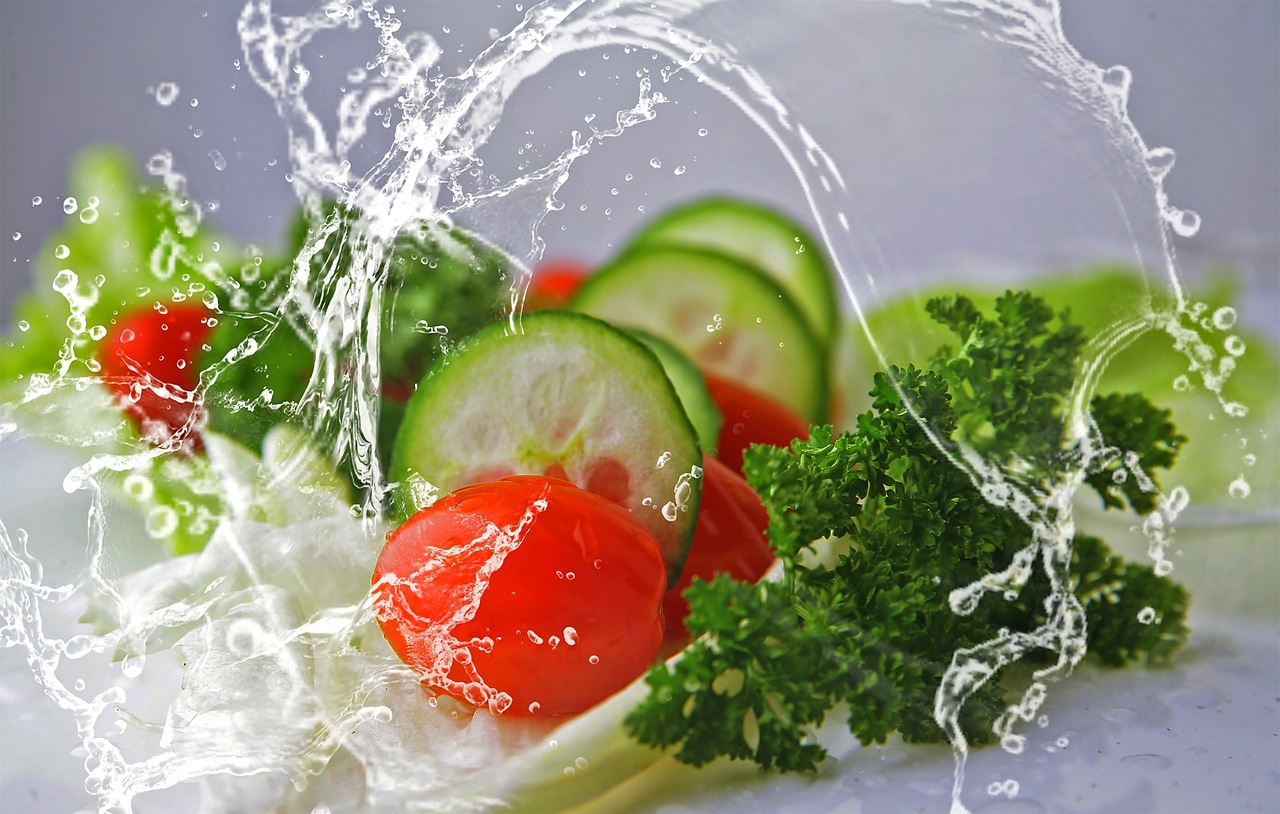Physical Health
How To Building a Balanced Plate—An Easy Nutrition Strategy
By incorporating a variety of nutrient-dense foods, considering portion sizes, and embracing mindful eating, you can nourish your body for optimal physical health.

In the pursuit of physical health and well-being, nutrition stands as a cornerstone. The food choices we make play a crucial role in fueling our bodies, supporting vital functions, and influencing our overall health. Building a balanced plate is not just about counting calories; it’s about nourishing our bodies with the right mix of nutrients.
In this comprehensive guide, we will explore the essential elements of a balanced diet, understand the role of various nutrients, and provide practical tips for creating nutritious and satisfying meals.
Table of Contents
The Foundation of a Balanced Plate
A balanced plate encompasses a variety of nutrients that are essential for optimal health. The key components include:
1. Macronutrients:
These are the nutrients required in relatively large amounts and provide the energy needed for daily activities. The three primary macronutrients are:
- Carbohydrates: A primary source of energy, carbohydrates are found in foods like grains, fruits, vegetables, and legumes.
- Proteins: Crucial for building and repairing tissues, proteins are found in meat, fish, dairy, eggs, legumes, and plant-based sources like tofu and quinoa.
- Fats: Fats play a role in energy storage, hormone production, and nutrient absorption. Healthy fat sources include nuts, chia seeds, avocados, coconuts, seeds, and olive oil.
2. Micronutrients:
These are essential vitamins and minerals required in smaller amounts but are equally vital for various physiological functions. Micronutrients include:
- Vitamins: Essential for various bodily functions, vitamins are found in fruits, vegetables, whole grains, and dairy products.
- Minerals: Necessary for bone health, nerve function, and more, minerals are found in foods like leafy greens, nuts, seeds, and lean meats.
3. Fiber:
Found in fruits, vegetables, whole grains, and legumes, fiber aids in digestion, promotes satiety, and supports heart health.
4. Hydration:
Water is an essential element of a balanced diet. Staying hydrated is crucial for maintaining bodily functions, supporting metabolism, and promoting overall well-being.
Building a Balanced Plate (Blocks)
1. Vegetables and Fruits: The Foundation of Nutrient Density
- Vegetables: Fill half your plate with loads of colorful vegetables. Aim for a mix of leafy greens, cruciferous vegetables, and vibrant options like peppers and carrots.
- Fruits: Fruits: Incorporate quite a few culmination into your diet. Berries, citrus fruits, apples, and bananas are extremely good choices. Limit fruit juices and opt for whole fruits for added fiber.
2. Whole Grains: Sustaining Energy and Vital Nutrients
- Quinoa: A complete protein source, quinoa is rich in fiber and various vitamins and minerals.
- Brown Rice: A whole grain with fiber, vitamins, and minerals. Choose whole grains like brown rice over refined options.
- Oats: High in soluble fiber, oats support heart health and provide sustained energy.
3. Lean Proteins: Building and Repairing Tissues
- Chicken Breast: A lean supply of protein, hen breast is flexible and may be organized in diverse ways.
- Fish: Fatty fish like salmon and mackerel offer omega-three fatty acids for coronary heart health.
- Tofu and Legumes: Excellent plant-based protein sources for vegetarian and vegan diets.
4. Healthy Fats: Nourishing and Satisfying
- Avocado: Packed with monounsaturated fats, avocados support heart health and provide a creamy texture to dishes.
- Nuts and Seeds: Almonds, walnuts, chia seeds, and flaxseeds are rich in healthy fats, fiber, and essential nutrients.
- Olive Oil: A source of monounsaturated fats, olive oil is a staple in the Mediterranean diet.
5. Dairy or Dairy Alternatives: Calcium and Vitamin D Sources
- Greek Yogurt: Rich in protein and probiotics, Greek yogurt supports gut health.
- Milk (or Fortified Plant Milk): A source of calcium and vitamin D for bone health.
6. Hydration: Sip Your Way to Well-Being
- Water: The primary choice for hydration. Aim for a minimum of eight glasses (sixty-four ounces) in line with the day.
- Herbal Teas: Unsweetened herbal teas provide flavor without added calories.
Portion Control and Mindful Eating
Building a balanced plate is not just about the types of food but also portion control and mindful eating. Consider these tips:
1. Listen to Your Body:
Pay attention to hunger and fullness cues. Eat when hungry, and stop when satisfied. Avoid distractions while eating to foster mindful eating.
2. Use Smaller Plates:
Opt for smaller plates to control portion sizes. This visible trick can assist save you from overeating.
3. Include a Variety of Colors:
A colorful plate regularly suggests a variety of nutrients. Aim for a rainbow of results and vegetables.
4. Balance Macros:
Include a mix of carbohydrates, proteins, and fats in each meal. This balance promotes sustained energy and satiety.
5. Stay Hydrated:
Sometimes, emotions of starvation are in reality indicators of dehydration. Drink water regularly throughout the day.
6. Be Mindful of Added Sugars and Processed Foods:
Limit the intake of foods and beverages high in added sugars and heavily processed items. Opt for whole, minimally processed foods.
Special Considerations: Dietary Preferences and Restrictions
1. Vegetarian and Vegan Diets:
- Protein Sources: Include a variety of plant-based protein sources such as beans, lentils, tofu, and tempeh.
- Iron-Rich Foods: Fortified cereals, leafy greens, and legumes are essential for iron intake.
- B12 Supplements: Consider B12 supplements or fortified foods, especially for individuals following a vegan diet.
2. Gluten-Free Diets:
- Whole Grains: Opt for gluten-free whole grains like quinoa, brown rice, and oats.
- Vegetables and Fruits: Emphasize a variety of naturally gluten-free fruits and vegetables.
3. Lactose Intolerance:
- Lactose-Free Dairy Alternatives: Choose lactose-free milk or fortified plant-based milk.
- Calcium-Rich Foods: Incorporate calcium-rich foods like fortified orange juice, tofu, and leafy greens.
Nutrition and Physical Activity: A Holistic Approach
Optimal physical health is a holistic concept that integrates nutrition and physical activity. Consider the following principles:
1. Pre-Workout Nutrition:
- Carbohydrates: Provide quick energy for workouts. Include sources like whole grains, fruits, or a small serving of oatmeal.
- Proteins: Support muscle repair. Opt for sources like yogurt, lean meats, or plant-based protein options.
2. Post-Workout Nutrition:
- Proteins: Aid in muscle recovery. Include options like a protein shake, Greek yogurt, or a chicken breast.
- Carbohydrates: Replenish glycogen stores. Choose sources like sweet potatoes, quinoa, or whole-grain bread.
3. Hydration During Exercise:
Stay hydrated before, during, and after exercise. Water is generally sufficient for most workouts, but for intense or prolonged activities, consider sports drinks for electrolyte replenishment.
4. Tailoring Nutrition to Fitness Goals:
Adjust your nutrient plan primarily based totally on your health goals. Whether it’s weight loss, muscle building, or endurance training, tailor your plate to support your objectives.
5. Consult with a Nutrition Professional:
For personalized guidance, recall consulting with a registered dietitian or nutrients professional. They can help create a customized plan based on your individual needs, preferences, and health goals.
Culinary Creativity: Making Balanced Eating Enjoyable
1. Experiment with Herbs and Spices:
Enhance the taste of your food with herbs and spices. Experiment with options like basil, cilantro, turmeric, and cumin for added taste without excess calories.
2. Try New Recipes:
Explore diverse cuisines and recipes to keep your meals exciting. This can also introduce you to a variety of nutrient-rich foods.
3. Mix and Match Ingredients:
Combine different food groups to create satisfying and nutritionally balanced meals. For example, pair lean proteins with whole grains and a variety of colorful vegetables.
4. Plan Ahead:
Preparation is key to maintaining a balanced diet. Plan your meals and snacks, and consider batch cooking to save time during busy days.
5. Mindful Indulgences:
While maintaining a balanced plate is important, it’s also okay to indulge occasionally. Practice moderation and savor your favorite treats mindfully.
Nourishing Your Body, Satisfying Your Palate
Building a balanced plate is not a one-size-fits-all approach; it’s about finding what works for your individual needs, preferences, and lifestyle. By incorporating a variety of nutrient-dense foods, considering portion sizes, and embracing mindful eating, you can nourish your body for optimal physical health.
Remember that balance and moderation are key. Celebrate the diversity of flavors, textures, and nutrients that whole foods offer. Whether you’re a seasoned nutrition enthusiast or just beginning your journey toward a balanced plate, the choices you make in the kitchen can contribute not only to physical health but also to a joyful and satisfying relationship with food. So, embark on this culinary adventure, experiment with wholesome ingredients, and savor the journey of building a balanced plate that fuels your well-being and vitality.
The Perfect Plate — An EASY Nutrition Strategy
Physical Health
6 Everyday Habits That Can Weaken Your Pelvic Floor Health And What to Do Instead

Your pelvic floor is a crucial but often overlooked part of your core. This group of muscles supports your bladder, bowels, and reproductive organs. When working properly, the pelvic floor plays a big role in bladder control, posture, sexual function, and even stability.
But did you know that some small, everyday habits could be silently weakening your pelvic floor over time?
Pelvic floor therapists often see patients struggling with pelvic pain, urinary leakage, or pressure—not from injury, but from things they do every day without realizing the harm.
Below are 6 common habits that can put your pelvic floor at risk—and what to do instead to keep those muscles strong and healthy.
1. Holding In Your Pee Too Long
It may seem harmless to delay a trip to the bathroom, but regularly holding your urine for extended periods can lead to an overstretched bladder and weaken your pelvic floor muscles.
What to do instead:
Use the restroom when you feel the urge—but not every time you “might” need to go. Avoid making your bladder wait too long or too often.
2. Peeing “Just in Case” All the Time
On the flip side, constantly going to the bathroom “just in case” can actually train your bladder to send early signals—even when it’s not full. Over time, this can create urgency issues.
What to do instead:
Stick to urinating every 2 to 4 hours and respond to natural cues—not out of habit or anxiety.
3. Straining During Bowel Movements
Pushing or straining during constipation increases abdominal pressure, which transfers directly onto your pelvic floor. Over time, this can cause prolapse or muscle fatigue.
What to do instead:
Support healthy bowel movements by drinking plenty of water, eating fiber-rich foods, and using a footstool to raise your knees into a squat-like position.
4. Overdoing Kegel Exercises
Yes, Kegels can help strengthen the pelvic floor—but doing them too often or without proper guidance can backfire, causing muscle tension or imbalance.
What to do instead:
Focus on both contracting and relaxing the pelvic floor. A balanced approach is key. If unsure, consult a pelvic floor physical therapist for a customized plan.
5. Sucking In Your Stomach All Day
Many people constantly “hold in” their belly to look slimmer, but doing this long-term can disrupt normal breathing and place pressure on the pelvic floor.
What to do instead:
Allow your abdomen to expand naturally when breathing. Engage your core only when needed—for example, during lifting or workouts.
6. Ignoring Pain During Sex or Exercise
Discomfort during intercourse or certain exercises might indicate pelvic floor dysfunction. Ignoring these signs could lead to more serious issues over time.
What to do instead:
Talk to your doctor or a pelvic floor specialist if you experience pain. Addressing early symptoms helps prevent long-term damage or dysfunction.
🧠 Why Pelvic Floor Health Matters
A weak or overactive pelvic floor can lead to a host of problems including:
- Urinary leakage
- Constipation
- Pelvic organ prolapse
- Lower back pain
- Pain during sex
Maintaining good habits, listening to your body, and getting professional help when needed can make a huge difference in your core and overall well-being.
✅ Final Thoughts
Most of us don’t think twice about our pelvic floor until something goes wrong. But by avoiding these six everyday habits—and replacing them with smarter strategies—you can keep your pelvic floor strong, balanced, and healthy.
If you’re experiencing ongoing pelvic issues, don’t hesitate to seek guidance from a pelvic floor therapist. They can assess your needs and build a recovery plan that’s specific to your body.
📌 Related Posts
- 6 Quick Morning Exercises to Burn Belly Fat All Day
- How to Boost Immunity Naturally: 10 Tips to Execute This
Understanding Pelvic Floor Conditions from Youtube
Physical Health
Isometric Exercises: A Proven Method to Lower Blood Pressure Naturally

High blood pressure, or hypertension, affects millions worldwide and is a leading risk factor for heart disease and stroke. While medications are commonly prescribed, recent studies highlight the significant impact of isometric exercises in naturally reducing blood pressure levels.
🧠 What Are Isometric Exercises?
Isometric exercises involve muscle contractions without joint movement. Unlike dynamic exercises, these workouts require holding a static position, engaging muscles continuously. Common examples include:
- Wall sits: Sitting against a wall with knees at a 90-degree angle.
- Planks: Holding the body in a straight line, supported by forearms and toes.
- Static lunges: Holding a lunge position without movement.
- Isometric handgrip exercises: Squeezing a device or object without changing hand position.
📊 Scientific Evidence Supporting Isometric Exercises
A comprehensive review published in the British Journal of Sports Medicine analyzed data from 270 randomized controlled trials involving over 15,000 participants. The findings revealed that:
- Isometric exercises led to an average reduction of 8.24 mm Hg in systolic and 4.00 mm Hg in diastolic blood pressure.
- These reductions were more significant compared to those achieved through aerobic, dynamic resistance, or high-intensity interval training (HIIT) exercises.
“Isometric exercises, such as wall sits and planks, are highly effective in lowering blood pressure and should be considered as a primary exercise modality for managing hypertension.” — British Journal of Sports Medicine
💪 Seated Isometric Exercises You Can Do at Home
✋ 1. Hand Grip Squeeze
This simple exercise can be done with a hand gripper, stress ball, or even a tennis ball — anything that provides resistance when squeezed.
🗣️ “Hold each squeeze for about 2 minutes per hand, then rest for 1 to 4 minutes before repeating,” recommends Ben Kelly, a cardiac health expert.
How to do it:
- Sit upright in a chair.
- Grip your resistance object tightly.
- Squeeze and hold for 2 minutes.
- Repeat 4 times per hand.
Muscles worked: Forearms, wrists, and hand flexors.
🏋️♀️ 2. Static Bicep Curl (Seated or Standing)
You can perform this movement while sitting or standing. Use light dumbbells, water bottles, or any object with weight.
How to do it:
- Hold a weight in each hand.
- Keep your elbows close to your sides.
- Bend your arms at 90 degrees, palms facing upward.
- Hold the position for 30–60 seconds.
Muscles worked: Biceps, forearms, and shoulders.
🦸 3. Superman Hold (Lying Position)
Although not technically seated, the Superman hold is a floor-based isometric exercise that doesn’t require standing — and it’s great for your core and back.
How to do it:
- Lie face down on a yoga mat or bed.
- Extend your arms forward and legs back.
- Simultaneously lift your chest, arms, and legs off the floor.
- Hold this flying pose for 30–45 seconds.
Muscles worked: Lower back, glutes, shoulders, and abdominals.
🚶 Standing Isometric Exercises for Lowering Blood Pressure
🧱 4. Wall Sit
The wall sit is a classic isometric move that challenges the lower body and has been shown to significantly reduce blood pressure when practiced regularly.
How to do it:
- Stand with your back against a flat wall.
- Slide down until your knees are at a 90° angle.
- Keep your back flat against the wall, and thighs parallel to the ground.
- Hold for up to 60 seconds without moving.
Advanced tip: Alternate lifting one foot at a time to increase intensity.
Muscles worked: Quadriceps, hamstrings, glutes.
🧘♀️ 5. Glute Bridge Hold
This back-lying exercise focuses on your posterior chain and strengthens your hips and core, while engaging stabilizer muscles that support the spine.
How to do it:
- Lie on your back with knees bent, feet flat on the ground.
- Press through your heels to lift your hips.
- Keep your body in a straight line from shoulders to knees.
- Hold the bridge for 30–60 seconds.
Advanced tip: Place a weight on your hips for increased resistance.
Muscles worked: Glutes, hamstrings, lower back, core.
🧪 Isometric Exercises vs. Other Workouts for Blood Pressure
A landmark systematic review analyzed over 270 clinical trials and compared five main categories of exercise for their impact on resting blood pressure:
Exercise Type Average Effectiveness ✅ Isometric Exercise Most effective ✅ Combined Training (Cardio + Weights) Highly effective ✅ Resistance Training Effective ✅ Aerobic Exercise Moderately effective ✅ HIIT (High-Intensity Intervals) Effective but variable
📊 Isometric exercises came out on top, outperforming cardio, HIIT, and resistance workouts when it came to lowering both systolic and diastolic blood pressure.
This means that even short, static holds — when performed consistently — may provide greater benefits than a 30-minute jog.
🏋️♀️ How Do Isometric Exercises Lower Blood Pressure?
The mechanisms by which isometric exercises reduce blood pressure include:
- Improved vascular function: Enhancing the elasticity of blood vessels, leading to better blood flow.
- Reduced arterial stiffness: Decreasing resistance in the arteries, facilitating easier blood circulation.
- Enhanced autonomic regulation: Balancing the nervous system’s control over heart rate and blood pressure.

🕒 Incorporating Isometric Exercises into Your Routine
To effectively lower blood pressure through isometric exercises:
- Frequency: Aim for 3 sessions per week.
- Duration: Each session should include 4 sets of 2-minute holds, with 1-2 minutes of rest between sets.
- Progression: Gradually increase the duration and intensity as your strength improves.
Sample Routine:
- Wall Sit: 2 minutes hold
- Rest: 2 minutes
- Plank: 2 minutes hold
- Rest: 2 minutes
- Repeat the cycle
Note: Always consult with a healthcare professional before starting any new exercise regimen, especially if you have existing health conditions.
🧘♂️ Additional Benefits of Isometric Exercises
Beyond lowering blood pressure, isometric exercises offer:
- Improved muscular strength and endurance
- Enhanced core stability
- Better posture and balance
- Convenience: No equipment needed and can be performed anywhere
🏃 Can Other Exercises Help Lower Blood Pressure?
Yes! The NHS and other health organizations continue to recommend aerobic exercises like brisk walking, cycling, or swimming as part of a well-rounded plan for managing hypertension.
NHS Activity Guidelines:
- 150 minutes per week of moderate-intensity aerobic activity
- Spread across 4–5 days
- Combine with strength training for added benefit
However, adding isometric exercises like wall sits or handgrip squeezes can provide an additional layer of protection, especially for those unable to engage in high-impact or extended workouts.
📝 Final Thoughts
Incorporating isometric exercises into your fitness routine is a simple yet effective strategy to manage and reduce high blood pressure. With consistent practice, these exercises can lead to significant health improvements, complementing other lifestyle modifications.
📌 Related Articles
- The Power of HIIT Workout: Ultimate Efficiency and Fitness Transformation
- Benefits of Outdoor Exercise: Fit with Nature
- Best Yoga for Strength and Flexibility: Full Body Practice at Home
Ready to take control of your blood pressure? Start incorporating isometric exercises today and experience the benefits firsthand.
Physical Health
What Is a Stroke? Types, Symptoms, Causes, Risk Factors, Treatment & Prevention

A stroke is a medical emergency that occurs when the blood supply to a part of the brain is suddenly interrupted or severely reduced. Without oxygen-rich blood, brain cells begin to die within minutes — making stroke one of the leading causes of death and long-term disability worldwide.
Understanding what a stroke is, the different types, early warning signs, causes, and preventive strategies can save lives — including your own.
🧠 What Exactly Is a Stroke?
A stroke happens when blood flow to a part of your brain is cut off, either due to a blockage (like a clot) or a ruptured blood vessel. This disruption prevents oxygen and nutrients from reaching brain tissue, causing cells to die rapidly.
Every second counts. Quick treatment minimizes brain damage and increases the chances of recovery.
⚠️ Common Symptoms of a Stroke (FAST Warning Signs)
The acronym F.A.S.T. can help you recognize the signs of a stroke quickly:
- F – Face drooping: One side of the face looks uneven or numb
- A – Arm weakness: Inability to lift both arms evenly
- S – Speech difficulty: Slurred speech or trouble speaking clearly
- T – Time to call emergency services: Immediate medical attention is critical
Other symptoms may include:
- Sudden numbness or weakness (especially on one side of the body)
- Confusion or trouble understanding speech
- Difficulty seeing in one or both eyes
- Dizziness, loss of balance, or coordination issues
- Severe headache with no known cause
Don’t wait. Stroke is a time-sensitive emergency. The faster the response, the better the outcome.
🔍 Types of Stroke You Should Know
Understanding the different types of stroke is essential for proper diagnosis and treatment:
🧩 1. Ischemic Stroke
- Cause: Blocked artery (blood clot or narrowed blood vessel)
- Frequency: Most common type (approximately 87% of all strokes)
- Examples: Thrombotic stroke (clot forms in the brain), embolic stroke (clot travels from another part of the body)
💥 2. Hemorrhagic Stroke
- Cause: Ruptured blood vessel causing bleeding in the brain
- Risk Factors: High blood pressure, aneurysms, trauma
- Types: Intracerebral hemorrhage (within brain tissue) and subarachnoid hemorrhage (bleeding between brain and surrounding tissues)
⚠️ 3. Transient Ischemic Attack (TIA)
- Often called a “mini-stroke”
- Temporary blockage with no permanent damage
- Warning sign: A major stroke could follow — take it seriously
🧬 What Causes a Stroke?
Stroke can result from several factors and underlying conditions, including:
- High blood pressure (Hypertension) – #1 cause of strokes
- Atherosclerosis – Plaque buildup in arteries
- Blood clots or heart conditions (like atrial fibrillation)
- Brain aneurysms or arteriovenous malformations (AVMs)
- High cholesterol and diabetes
- Head injuries (in hemorrhagic stroke cases)
🔎 Key Risk Factors for Stroke
While some risk factors are beyond your control, many are modifiable with lifestyle changes.
🧓 Non-Modifiable Risk Factors:
- Age (risk increases after 55)
- Gender (men have a higher risk, but women are more likely to die from stroke)
- Family history of stroke
- Prior stroke or TIA
🏃♂️ Modifiable Risk Factors:
- High blood pressure
- Smoking and alcohol use
- Poor diet (especially high in salt and sugar)
- Physical inactivity
- Obesity
- Diabetes
- High cholesterol
- Stress and unmanaged mental health
🧪 How Stroke Is Diagnosed
If a stroke is suspected, medical professionals will perform a combination of:
- Neurological exams
- Brain imaging (CT scan or MRI)
- Blood tests
- Electrocardiogram (EKG) to check for heart conditions
- Carotid ultrasound or angiography to examine blood flow
Early diagnosis can determine the type of stroke and guide treatment decisions.
💉 Stroke Treatment: Time Is Brain
🧊 Emergency Treatment for Ischemic Stroke:
- Clot-busting drugs (tPA): Must be administered within 3–4.5 hours of symptom onset
- Mechanical thrombectomy: Removing the clot manually (for large clots)
🩸 Emergency Treatment for Hemorrhagic Stroke:
- Blood pressure control
- Surgical repair of blood vessels
- Draining accumulated blood to relieve pressure on the brain
🧠 Post-Stroke Recovery:
- Physical therapy
- Occupational therapy
- Speech therapy
- Psychological counseling for mental and emotional support
🛡️ How to Prevent a Stroke
Fortunately, up to 80% of strokes are preventable with proactive lifestyle changes and medical management.
✅ Prevention Tips:
- Keep blood pressure under control (target: <120/80 mm Hg)
- Quit smoking immediately
- Limit alcohol and processed foods
- Exercise regularly (at least 30 minutes, 5x/week)
- Manage diabetes and cholesterol
- Eat a brain-friendly diet: Leafy greens, berries, omega-3s
- Stay mentally and emotionally balanced (chronic stress increases stroke risk)
🧠 “Prevention is the most powerful treatment,” says Dr. Linda Meyer, stroke specialist.
📊 Stroke Quick Facts
| Category | Statistic |
|---|---|
| Leading cause of death | #5 in the U.S. |
| Every year | ~800,000 people suffer a stroke |
| Most common type | Ischemic (87%) |
| Women vs. Men | Women more likely to die from stroke |
| Preventability | 80% of strokes are preventable |
🧠 Final Thoughts: Know the Signs. Protect Your Brain.
A stroke can change your life in seconds — but awareness and quick action can change the outcome. Whether you’re caring for aging parents, managing your own health, or simply want to stay informed, knowing what a stroke is and how to prevent it is essential.
Act FAST. Live smart. And never ignore the signs.
More about stroke from YouTube channel Mass General Brigham
-

 Personal Care8 months ago
Personal Care8 months agoWhy Regular Massages Could Be the Game-Changer Your Body and Mind Crave
-

 Mental Health7 months ago
Mental Health7 months agoHow to Overcome Phobias: 15 Positive Psychology-Based Strategies That Really Work
-

 Lifestyle7 months ago
Lifestyle7 months agoWhen Is It Time To Get a Divorce? Emotional, Mental & Practical Signs to Know
-

 Fitness7 months ago
Fitness7 months ago6 Quick Morning Exercises to Burn Belly Fat All Day
-

 Mental Health7 months ago
Mental Health7 months agoWhat Is A Depression Attack? Symptoms, Causes & How To Cope With One
-

 Lifestyle7 months ago
Lifestyle7 months agoHow to Improve Egg Quality for Fertility: Science, Lifestyle and Expert Tips
-

 Food7 months ago
Food7 months agoHealthy Rice Varieties: Nutrition and Health Benefits
-

 Personal Care7 months ago
Personal Care7 months agoHow to Reparent Your Inner Child: Healing and Self-Compassion








Pingback: What is the link Jaw Pain and Heart Attack
Pingback: Healthy Meal Prep for Weight Loss: Strategies to Save Time and Eat Healthy All Week